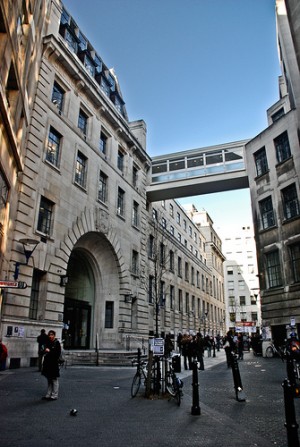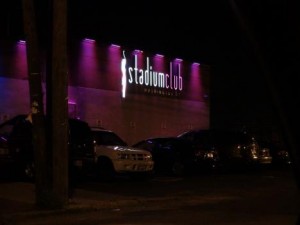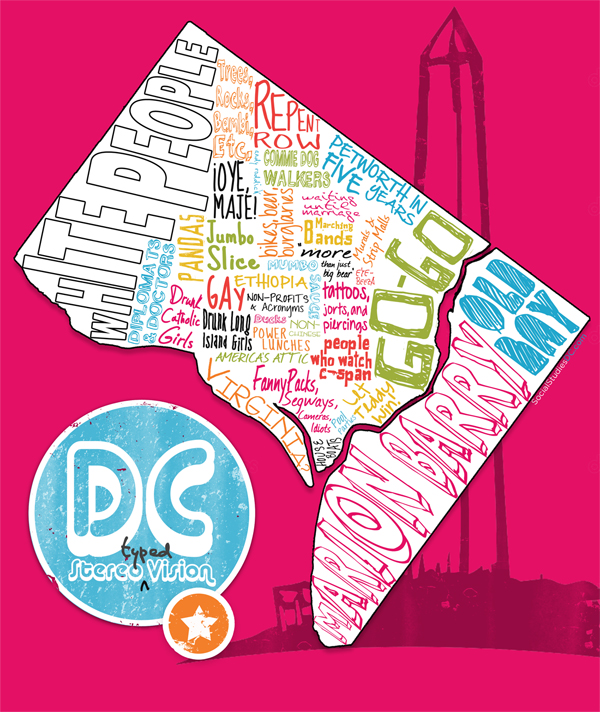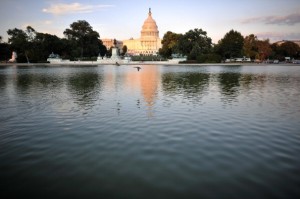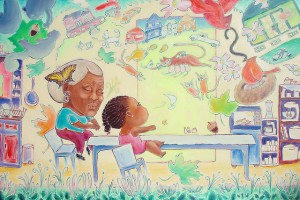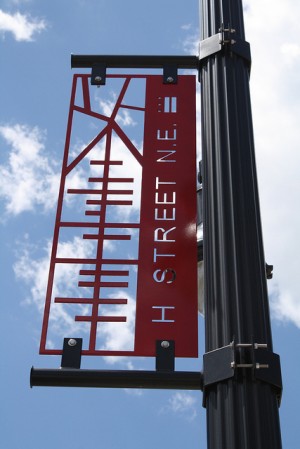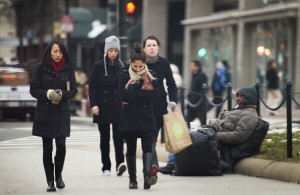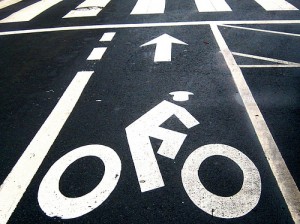
Flickr: M.V. Jantzen
Bike lane, Dupont Circle
Is the anger in D.C. toward bicyclists misdirected? This week’s Washington City Paper cover story explores the issue. Here are five points in the article that stand out:
Bike lanes are inaccurately characterized as a “welcome mat ” for rich, white gentrifiers. Yet some of the locals in Ward 3,which includes Tenleytown, dislike bike lanes as much as people in Ward 7, Fairlawn . So people of all races and classes can find common ground in their discomfort with bike lanes: “If anti-bike-lane sentiment were really about race or class, it’s unlikely that a white guy from Ward 3 and a black guy from Ward 7 would sound nearly exactly the same when they talk about the topic.” Reporter Alex Baca suggests the feeling comes from old-timers who see the bike lanes as a symbol of change.
Bikes are seen as oppositional to cars. Cars symbolize powerful things like freedom and the “American” way. Bicyclists are then tarred with an extremely negative brush: “Anyone with access to a Bruce Springsteen album knows there are deep veins of American culture where four wheels signify freedom, adulthood, and maybe even America itself. Those who shun automobiles, by extension, shun all of those things. Like grown-ups playing kickball or attending Twitter-fed snowball fights, such a rejection of traditional adulthood seems like the realm of the privileged.”
It’s the media’s fault. Quick, what’s an easy way to encapsulate complicated social dynamics, change, race, class and everything else that might cause tension in a city? Bike lanes! “David Alpert, editor of the blog Greater Greater Washington, suggests the brouhaha was propped up by media outlets looking for a quick way to frame last year’s mayor’s race. ‘I think to some extent it became an easy shorthand for people writing about race relations and about divisions in D.C.,’ he says.”
D.C. is not special. People love to compare the District to New York City, which isn’t rushing to embrace bike lanes, either. “Look at New York, where transportation commissioner Janette Sadik-Khan has been vilified in Park Slope (where brownstones sell for nearly $2 million) and Staten Island (a stronghold of the white ethnic middle class) alike for installing lanes.”
A key reason why some residents are against bike lanes has nothing to do with race or class: They simply weren’t consulted first. A lack of outreach or communication from city government resulted in resentment: “Bike lanes in D.C. seem to come with an extra emotional charge, a legacy of the way they were installed—rapidly, and without much notice to or input from the people nearby—under Fenty and his transportation czar, Gabe Klein.”





